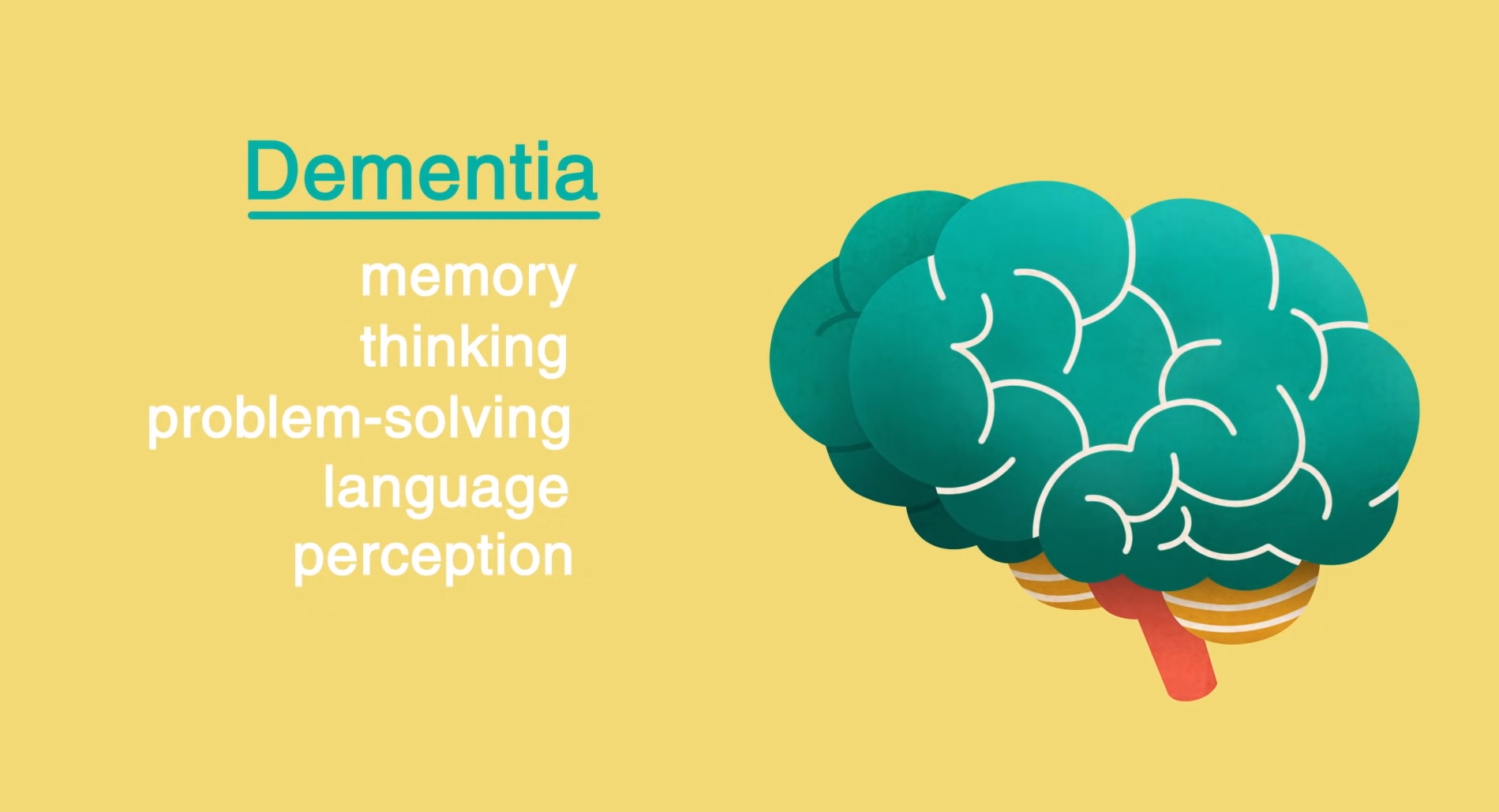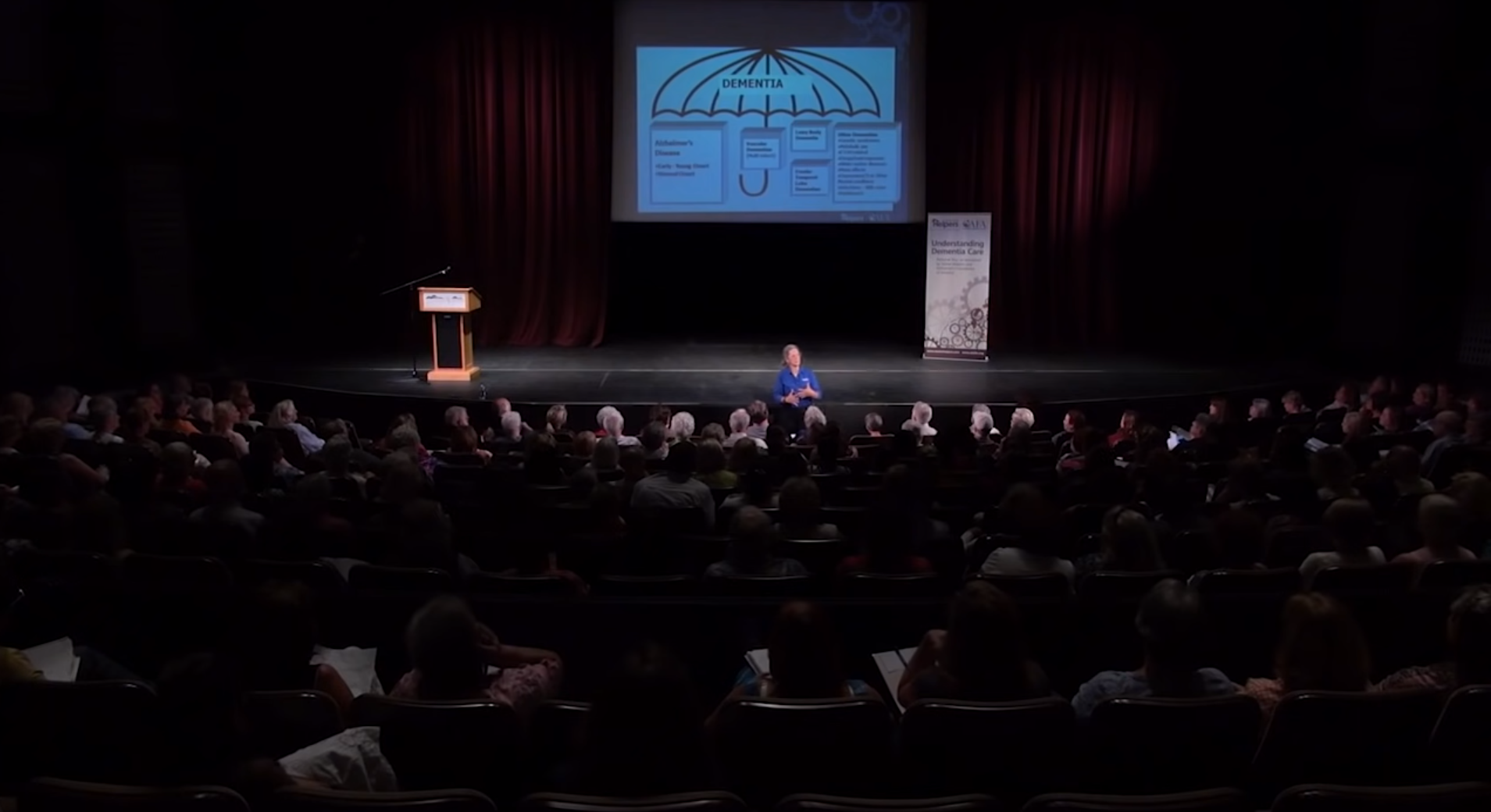Understand dementia in under 3 minutes
Most common types of dementia explained
Mild cognitive impairment
Cognitive issues not related to aging that are severe enough to be noticeable to other people, but not serious enough to interfere with daily life.
Dementia
Dementia is an umrella term for a group of brain disorders. The major ones are listed below.
Alzheimer’s disease
Alzheimer's disease is the most common form of dementia, affecting 60 to 80 percent of cases. Symptoms can vary widely. The first problem many people with Alzheimer's notice is forgetfulness severe enough to affect their work, lifelong hobbies or social life. Other symptoms include confusion, trouble organizing and expressing thoughts, misplacing things, getting lost in familiar places and changes in personality and behavior.
Vascular dementia
Vascular dementia is the second most common type of dementia, after Alzheimer's. It occurs when clots block blood flow to parts of the brain, depriving nerve cells of food and oxygen. It can occur after a single major stoke or when a series of very small stokes, or infarcts, clog tiny blood vessels. Common symptoms can include forgetfulness, difficulty focusing attention and confusion.
Mixed dementia
In mixed dementia, Alzheimer's disease and vascular dementia occur at the same time. Decline may follow a pattern similar to either Alzheimer's or vascular dementia or a combination of the two. Experts suspect mixed dementia whenever a person has evidence of cardiovascular disease and dementia symptoms that get worse slowly.
Lewy body dementia
In Lewy body dementia abnormal deposits of a protein called alpha-synuclein form inside the brain's nerve cells. Symptoms include memory problems, confusion, poor judgment, movement symptoms (stiffness, shuffling walk, shakiness, lack of facial expression, problems with balance and falls), excessive daytime drowsiness, visual hallucinations, and REM sleep disorder.
Frontotemporal dementia
Frontotemporal dementia encompasses several types of dementia involving the frontal and temporal lobes of the brain. FTDs are broadly presented as behavioral or language disorders. Signs and symptoms typically manifest in late adulthood, more commonly between the ages of 45 and 65, approximately equally affecting men and women. Common signs and symptoms include significant changes in social and personal behavior, apathy, blunting of emotions, and deficits in both expressive and receptive language.
Parkinson’s disease
Lewy bodies may also be found in people with Parkinson's disease. The cells that are damaged and destroyed are chiefly in a brain area important in controlling movement. Symptoms include tremors and shakiness, stiffness, difficulty walking, muscle control, balance, lack of facial expression and impaired speech. Many individuals with Parkinson's develop dementia in later stages of the disease.
Local Jacksonville Florida caregiver resources
Mayo Clinic Jacksonville Alzheimer’s Disease Research Center
Diagnosis, medical resources and clinical trials
Learn more



